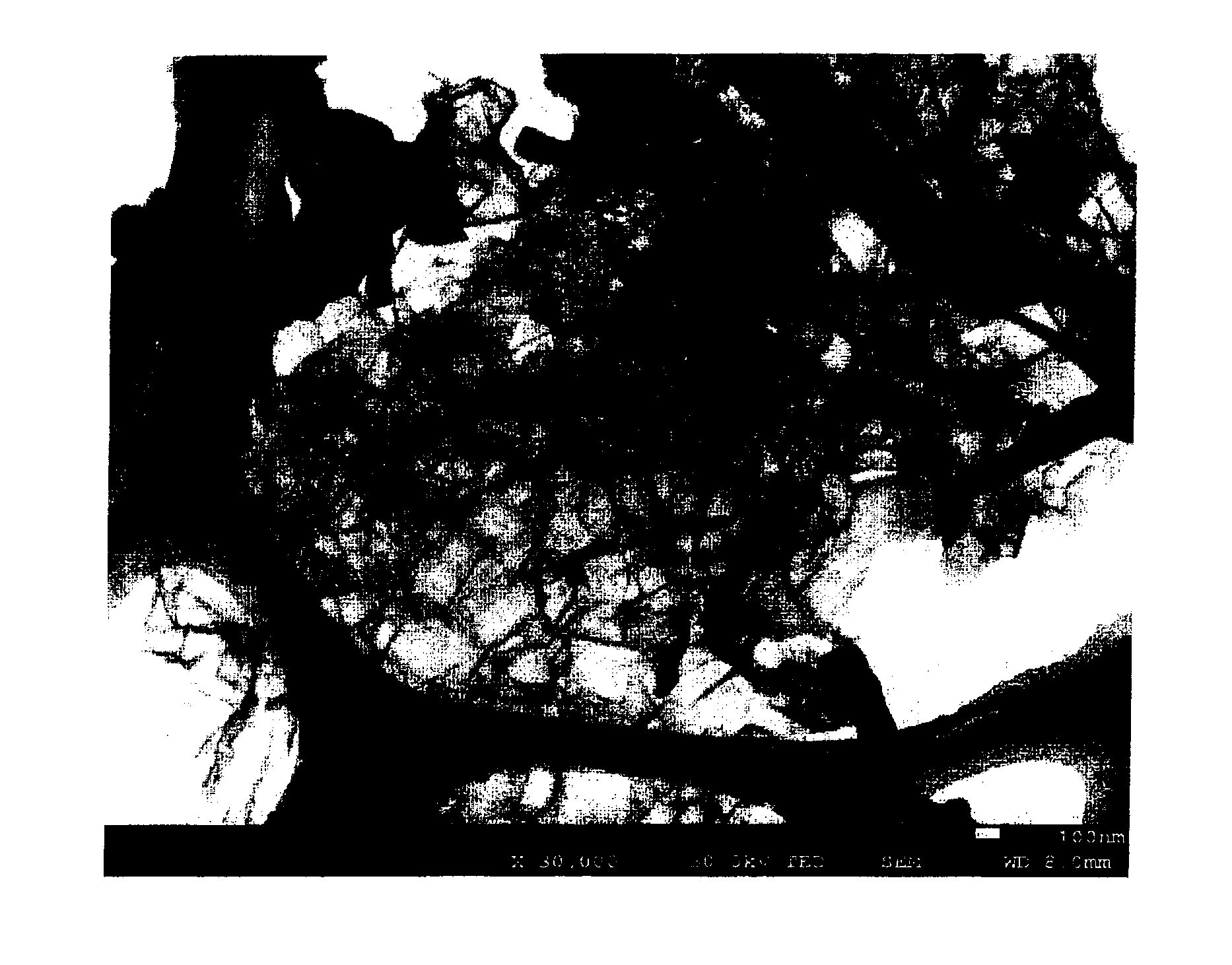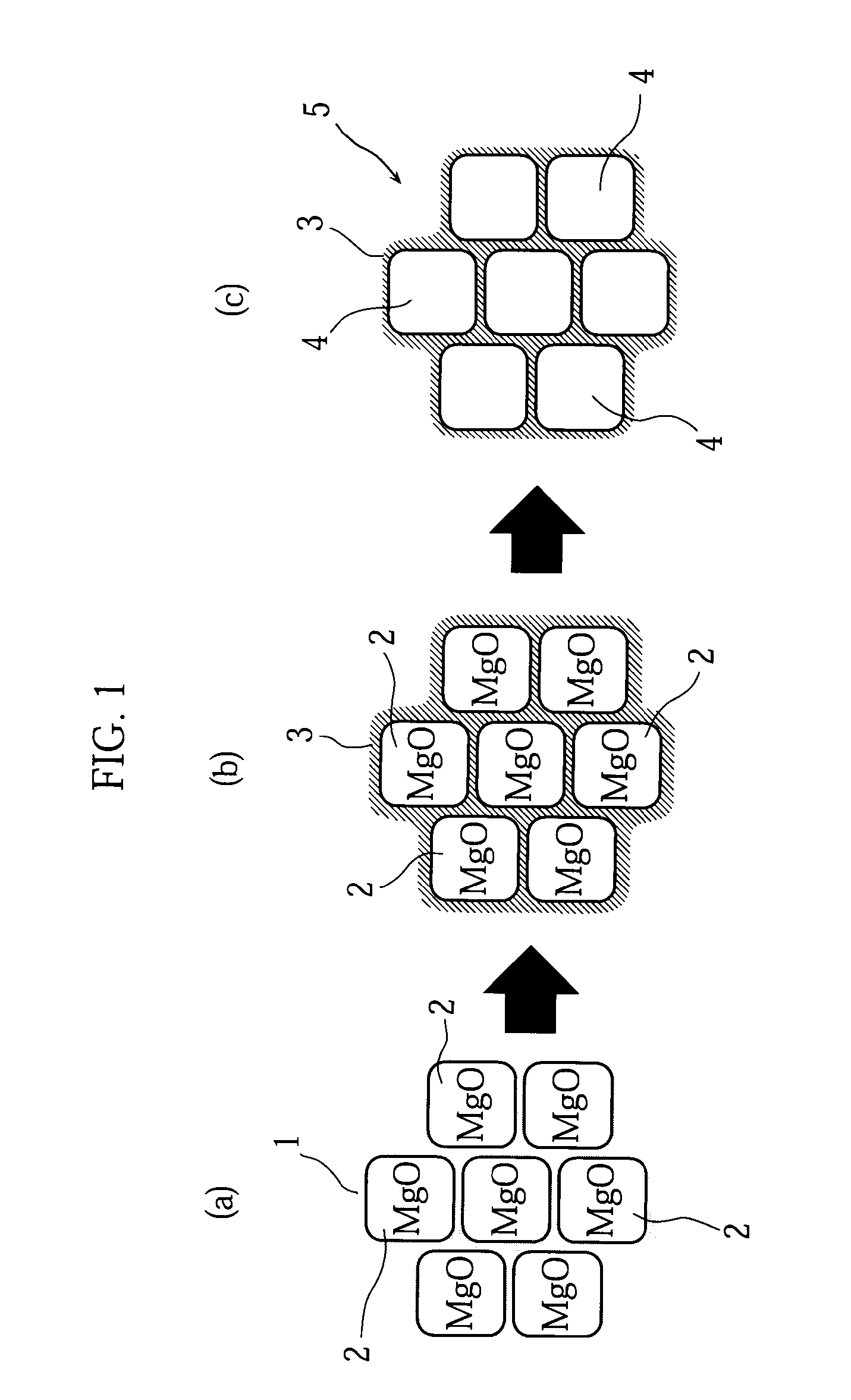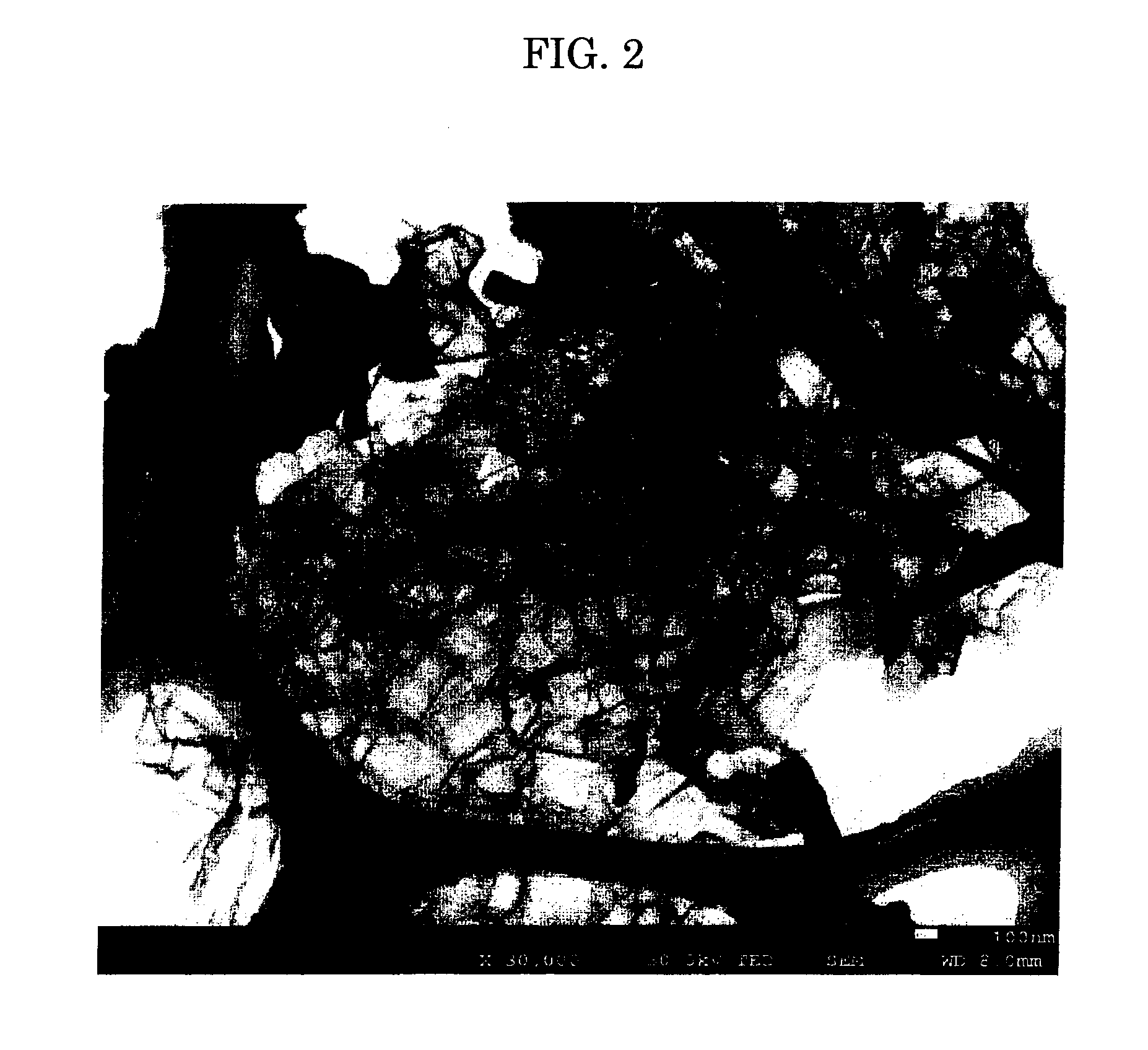Porous carbon and method of manufacturing same
a technology of porous carbon and manufacturing method, which is applied in the field of porous carbon, can solve the problems of low recovery rate, metal evaporated, and increased cost, and achieve the effect of easy control of the pore diameter
- Summary
- Abstract
- Description
- Claims
- Application Information
AI Technical Summary
Benefits of technology
Problems solved by technology
Method used
Image
Examples
example 1
[0056]First, as illustrated in FIG. 1(a), a polyamic acid resin 1 (imide-based resin) as a carbon precursor and magnesium oxide 2 (MgO, average crystallite size 100 nm) as template particles were mixed at a weight ratio of 90:10. Next, as illustrated in FIG. 1(b), the mixture was heat-treated in a nitrogen atmosphere at 1000° C. for 1 hour, to allow the polyamic acid resin to undergo heat decomposition, so that carbon 3 was prepared. Lastly, as illustrated in FIG. 1(c), the resultant carbon 3 was washed with a sulfuric acid solution added at a concentration of 1 mol / L, to dissolve the MgO away completely, whereby porous carbon 5 having a multiplicity of pores 4 was obtained.
[0057]The porous carbon fabricated in this manner is hereinafter referred to as a present invention carbon A1.
[0058]FIGS. 2 and 3 respectively show a STEM (scanning transmission electron microscope) photograph and a SEM (scanning electron microscope) photograph of the present invention carbon A1. As clearly seen ...
example 2
[0060]Porous carbon was fabricated in the same manner as described in Example 1 above, except that the average crystallite size of the magnesium oxide was 5 nm.
[0061]The porous carbon fabricated in this manner is hereinafter referred to as a present invention carbon A2.
[0062]FIGS. 5 and 6 respectively show a STEM (scanning transmission electron microscope) photograph and a SEM (scanning electron microscope) photograph of the present invention carbon A2. As clearly seen from the two figures, it is observed that the present invention carbon A2 has a three-dimensional network structure (spongy carbon form).
experiment 1
(Experiment 1)
[0067]The relationship between the pressure and the amount of N2 adsorbed was studied for the present invention carbons A1 and A2 as well as the comparative carbons Z1 and Z2. The results are shown in FIG. 7.
[0068]As clearly seen from FIG. 7, when the relative pressure is 1.0, little difference is observed in the amount of N2 adsorbed between the present invention carbons A1, A2 and the comparative carbon Z2. However, when the relative pressure is in the range of 0 to to 0.1, it is observed that the present invention carbons A1 and A2 adsorb large amounts of N2, while the comparative carbon Z2 adsorbs little N2. It is also observed that the amount of N2 adsorbed is very small for the comparative carbon Z1 over the entire range.
[0069]The reason is believed to be as follows. In the present invention carbons A1 and A2, mesopores and micropores disposed at the positions facing the mesopores are formed. As a result, the micropores adsorb N2 when the relative pressure is low...
PUM
| Property | Measurement | Unit |
|---|---|---|
| Temperature | aaaaa | aaaaa |
| Temperature | aaaaa | aaaaa |
| Fraction | aaaaa | aaaaa |
Abstract
Description
Claims
Application Information
 Login to View More
Login to View More - R&D
- Intellectual Property
- Life Sciences
- Materials
- Tech Scout
- Unparalleled Data Quality
- Higher Quality Content
- 60% Fewer Hallucinations
Browse by: Latest US Patents, China's latest patents, Technical Efficacy Thesaurus, Application Domain, Technology Topic, Popular Technical Reports.
© 2025 PatSnap. All rights reserved.Legal|Privacy policy|Modern Slavery Act Transparency Statement|Sitemap|About US| Contact US: help@patsnap.com



